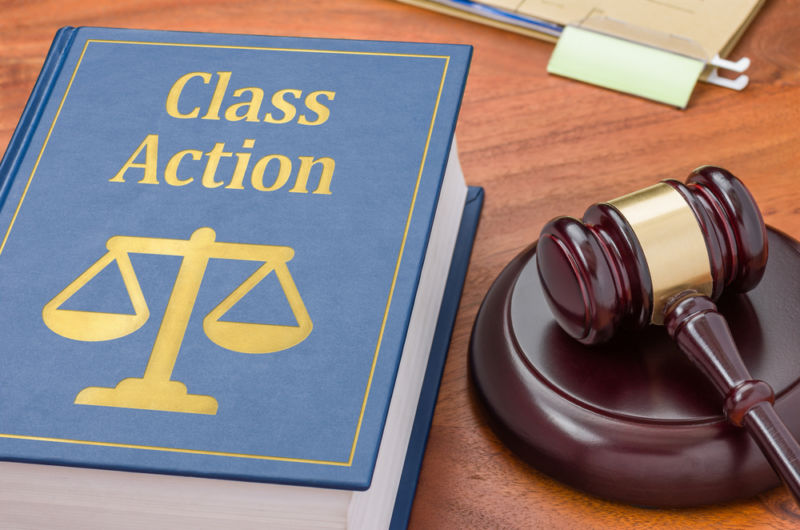Lawful Insight: Browsing the Landscape of Class Action Lawsuit Instances
Lawful Insight: Browsing the Landscape of Class Action Lawsuit Instances
Blog Article
Understanding Class Activity Lawsuit: A Guide for Lawyers
Class activity lawsuits have come to be an important part of the lawful landscape, permitting for the loan consolidation of several cases into a single action. By diving right into the details of class activity legal actions, this guide equips lawyers with the understanding and devices required to efficiently browse this complicated location of regulation.
The Essentials of Class Activity Lawsuits
Class activity legal actions are a legal system utilized to consolidate similar insurance claims from a team of individuals into a solitary legal action, offering a cost-efficient and efficient technique to looking for justice and resolution. This type of legal action permits a representative complainant, acting on part of the entire course, to bring a claim against an accused that has allegedly created damage or broke the legal rights of numerous individuals.
The standard demands for bringing a course activity legal action consist of numerosity, commonality, typicality, and adequacy of representation. Numerosity refers to the fact that the course must be so big that joinder of all members would be unwise.
Class activity lawsuits can be helpful for both plaintiffs and offenders. For defendants, it offers the chance to successfully resolve multiple insurance claims in a single legal action, staying clear of the demand to protect versus various private legal actions.
Identifying and Assessing Possible Class Participants
After developing the standard requirements for a class action suit, the following step is to recognize and evaluate potential course participants. If they satisfy the essential requirements., this process includes determining who might be part of the class and examining their insurance claims to determine.
To identify possible course members, attorneys commonly carry out substantial study and collect appropriate details. This may include reviewing records, carrying out interviews, and examining records to determine people or entities that might have been affected by the alleged misdeed. It is vital to establish a detailed and clear checklist of potential course participants to ensure that all impacted parties are consisted of in the suit.
Once possible class members have actually been recognized, the following step is to examine their claims. If they fulfill the lawful needs for class certification, this involves assessing the qualities of each individual case to figure out. Lawyers have to meticulously assess the realities, evidence, and legal concepts of each potential course participant's insurance claim to make sure that they have a feasible case.
Analyzing possible class participants also includes identifying whether they satisfy the class meaning and have actually suffered comparable damage as an outcome of the offender's activities. This needs comparing the realities and situations of each possible class member's circumstance to the claims and legal concepts presented in the suit.
Navigating the Course Certification Refine
To effectively navigate the course qualification process, lawyers should vigilantly comply with the step-by-step needs stated by the court. Course qualification is a critical action in a course activity legal action, as it determines whether an instance can proceed as a class action, representing a group of people that have comparable claims versus a defendant. The process involves pleasing specific standards, such as numerosity, commonality, typicality, and competence of representation.
First of all, legal representatives should develop numerosity by showing that the course is so big that private joinder is impractical. This can be achieved through evidence or specialist testament. Second of all, they should develop commonality by revealing that there prevail inquiries of regulation or fact that predominate over private issues. This needs a detailed analysis of the defenses and cases included.
Following, legal representatives must reveal typicality, which means that the depictive complainant's insurance claims are regular of the cases of the course members. This guarantees that the interests of the representative plaintiff align with the passions of the class. Finally, legal representatives must demonstrate competence of representation, indicating that the representative complainant and their counsel will rather and effectively represent the rate of interests of the course.
To navigate this procedure efficiently, lawyers need to extensively prepare by conducting substantial study, collecting evidence, and developing a compelling disagreement that pleases each of these standards. They must likewise be prepared to react to any kind of obstacles or objections increased by the accused. By diligently sticking to the step-by-step needs stated by the court, lawyers can enhance their possibilities of acquiring class accreditation and progressing the rate of interests of the course participants.

Secret Approaches for Managing Course Activity Litigation
Upon effectively browsing the course certification process, legal representatives must then carry out vital techniques for successfully taking care of class action litigation. These methods are crucial to guarantee that the case continues smoothly and efficiently, inevitably taking full advantage of the possibilities of a beneficial outcome for the course members.
One trick approach is to establish a cohesive and solid legal team (Class action lawsuit). This includes setting up a group of lawyers with expertise in course action lawsuits, along with other pertinent areas such as the details industry or topic entailed in the case. A well-rounded group can bring various point of views and abilities to the table, boosting the overall effectiveness of the lawsuits
An additional vital approach is to develop a detailed and well-balanced litigation Class action lawsuit strategy. This strategy should detail the general purposes of the case, along with the specific lawful theories and arguments that will certainly be pursued. It should also consist of a timeline and budget plan to make sure that the situation remains on track and within the designated resources.
In addition, lawyers must proactively engage with the course members throughout the litigation procedure (Class action lawsuit). This includes providing routine updates on the progression of the situation, seeking input and responses from the class participants, and dealing with any type of worries or questions they might have. By cultivating open communication and collaboration, attorneys can develop count on and support amongst the course participants, which can be important in accomplishing an effective resolution
Clearing Up Course Activity Lawsuits: Settlement and Approval
When it comes to resolving class activity suits, efficient settlement and acquiring authorization are crucial actions in accomplishing a resolution. Class action lawsuits are intricate and involve a multitude of plaintiffs, making it crucial to get to a settlement that is fair and satisfactory to all celebrations entailed.

When a settlement arrangement is reached, it should be approved by the court. The court's duty in this procedure is to make certain that the negotiation is fair, affordable, and effectively secures the interests of the course members. The court will think about variables such as the nature of the insurance claims, the stamina of the proof, the prospective healing for the class members, and any kind of arguments raised by class participants.
Acquiring court approval is important as it gives finality to the settlement and safeguards the passions of the class members. It makes sure that the settlement is binding and enforceable, and class participants can obtain their rightful payment.
Conclusion

Class activity claims have actually come to be an important part of the lawful landscape, allowing for the consolidation of several cases into a solitary activity. Class qualification is an important action in a course action legal action, as it identifies whether an instance can proceed as a course activity, representing a team of people who have similar insurance claims versus an accused. By faithfully adhering to the step-by-step needs established forth by the court, lawyers can enhance their possibilities of getting class certification and progressing the rate of interests of the course participants.
The court will certainly take into consideration aspects such as the nature of the claims, the strength of the evidence, the possible healing for the course members, and any type of objections increased by course participants.
By identifying and examining potential class members, legal representatives can determine the feasibility of a course activity legal action.
Report this page